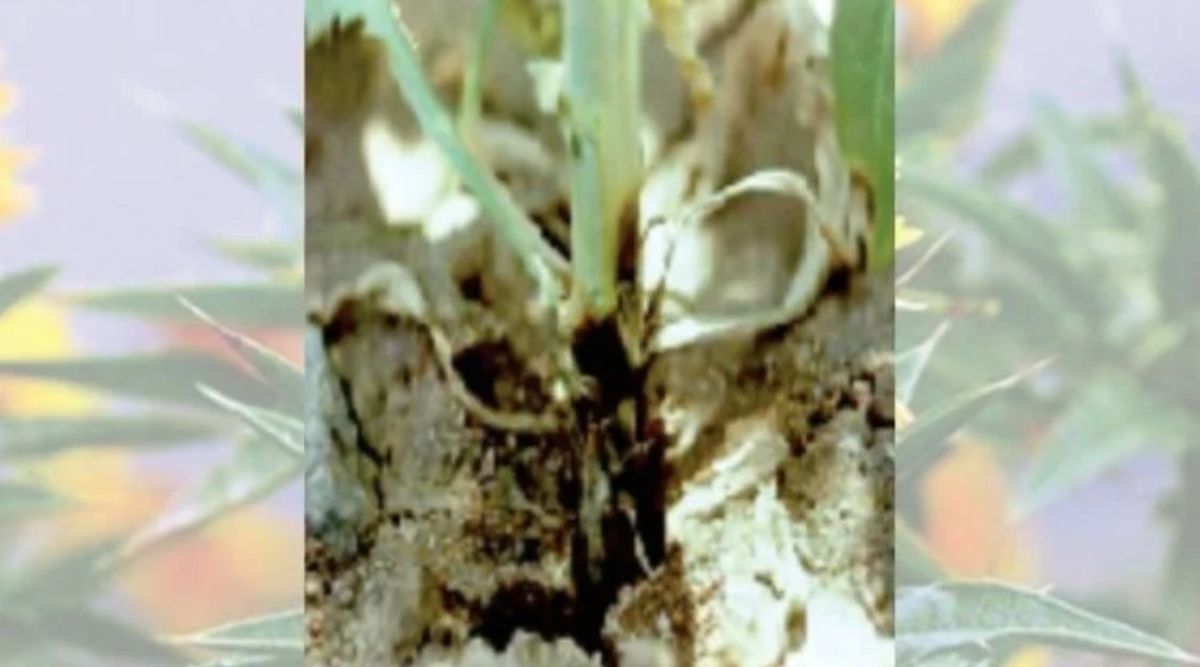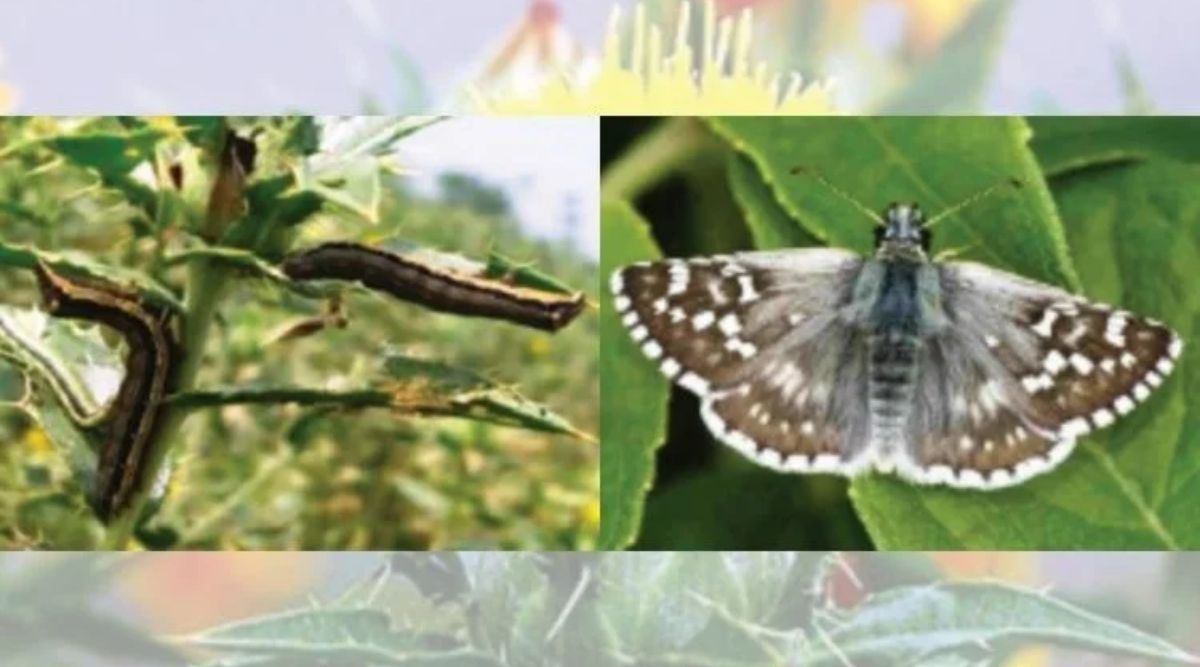Safflower is less affected by diseases, what protection to be taken?
Suspicion of diseases increases due to repeated cropping of safflower in the same field, increase in moisture and weed
There is no special problem of diseases in the safflower crop. Nevertheless, protecting the safflower crop from diseases and pest attacks is very important, as it often results in 20 to 30 percent yield loss. That’s why the farmer should be very aware of the identification, causes, and treatment methods of major pests and diseases attacking safflower. Due to repeated cropping of safflower in the same field and an increase in moisture after rain or weed dirt in the field before sowing, the possibility of some pests and diseases increases.
Adopting proper crop rotation, sowing only treated seeds, good management of drainage, and cleanliness in the fields prove to be very useful for its prevention. If infestation of caterpillars is observed on the safflower crop, spraying of 350 ml vita halothene plus imidacloprid (Solomon) or 1250 ml lamda cyhalothene plus thiamethoxam in 500 litres of water should be done per hectare.
Also Read: Capsicum Cultivation: Advanced varieties give yield thrice a year
Mahu or Champa Insect- The biggest problem in the safflower crop is black coloured Mahu or Champa insect. It first appears on the plants at the edge of the field. This insect damages safflower leaves by sucking the nutritive juice from its tender stems. Due to this, the growth of plants stops, and they start turning yellow. Keep in mind that for the prevention of Champa insects, spray any medicine only once. If there is a need for second spraying, use another medicine after 15 days after the last spraying. Do not use the medicine used once in the next spraying.
80 to 100 ml per acre of Lamda cyhalothrin plus Thiamethoxam or 80 grams of Thiamethoxam, Imidacloprid, or Acetamiprid in 150 litres of water or Methyl demeton 25 EC at 0.05% or Dimethoate 30 EC at 0.03% or Spray by making 0.04% solution of Triazophos 40 EC.

Root rot disease- Outbreak of root rot disease can be seen on small safflower plants. Due to this, white-coloured fungus accumulates on the roots, and the plants turn yellow and dry up. But if the soil and seeds are treated during sowing, then root rot disease can be avoided. For seed treatment, 5 g Trichoderma or 100-105 g Tebuconazole or 200 to 300 g Carbendazim plus Mancozeb should be used per kg of seed. For soil treatment, 5 kg of Trichoderma or 100 kg of Pseudomonas should be mixed with cow dung and applied in the field before sowing. And if symptoms of root rot disease are seen in the standing crop, then 450-500 grams of Azoxystrobin or 500 grams of Tebuconazole should be dissolved in 500 litres of water and sprayed per hectare.

Bhabhutiya disease- Due to Bhabhutiya disease, white powder like powder accumulates on the leaves, twigs and stems of safflower. Due to its effect, the process of photosynthesis of the plant is disrupted and its affected part turns black and dries up. To prevent this, spray a solution of 3 grams of soluble sulfur per litre or sprinkle 20 to 25 kg of sulfur powder per hectare or use karathane at the rate of 500-750 ml per hectare.
Saffron disease- Red or pink coloured spots appear on the leaves of safflower due to saffron disease. Gradually the small spots coalesce and become larger. The safflower plant affected by this starts drying up. To prevent this, Propiconazole 500 ml or Mancozeb 1-1.5 kg per hectare or Dithane M-45 should be sprayed on the crop at the rate of 3 grams per litre.
Also Read: Why Safflower Cultivation is a boon for drought-prone fields?
Black spot disease – This disease is caused by Alternaria fungus. Because of this, small black spots appear on the leaves of safflower, which gradually start spreading. For its prevention, spraying of 100 kg of Mancozeb in 500 litres of water should be done for each hectare.
Safflower caterpillar – Like all other crops, safflower is also attacked by many types of caterpillars or crawling worms. Its outbreak is more at the time of flowering in plants. The caterpillars enter inside the buds and destroy the major parts of the flower. This affects the yield badly. For the prevention of caterpillars, 5 ml neem oil per litre of water or 160 grams of emamectin benzoate or 500-550 ml of lambda-cyhalothrin or 750-1000 grams of Beauveria bassiana in 500 litres of water should be used at the rate of per hectare.

Also Read: Safflower Cultivation: Why is Safflower unique in the crop cycle?
Contact us – If farmers want to share any valuable information or experiences related to farming, they can connect with us via phone or whatsapp at 9599273766 or you can write to us at “[email protected]”. Through Kisan of India, we will convey your message to the people, because we believe that if the farmers are advanced then the country is happy.
You can connect with Kisan of India on Facebook, Twitter, and Whatsapp and Subscribe to our YouTube channel.



